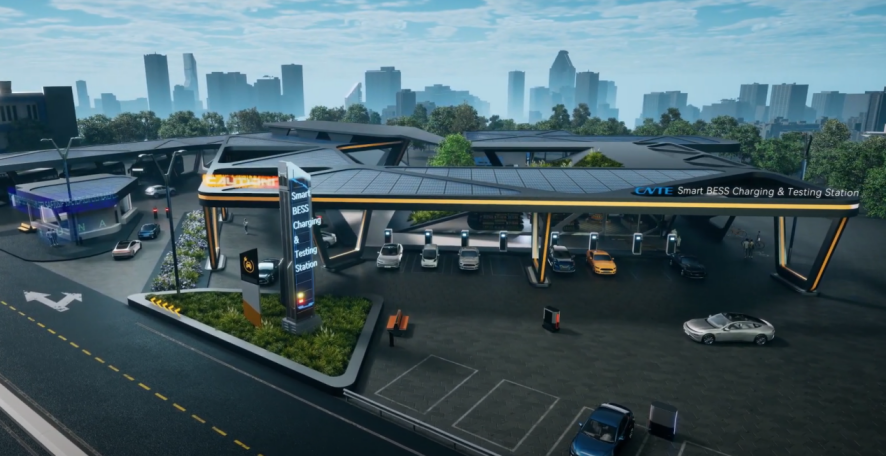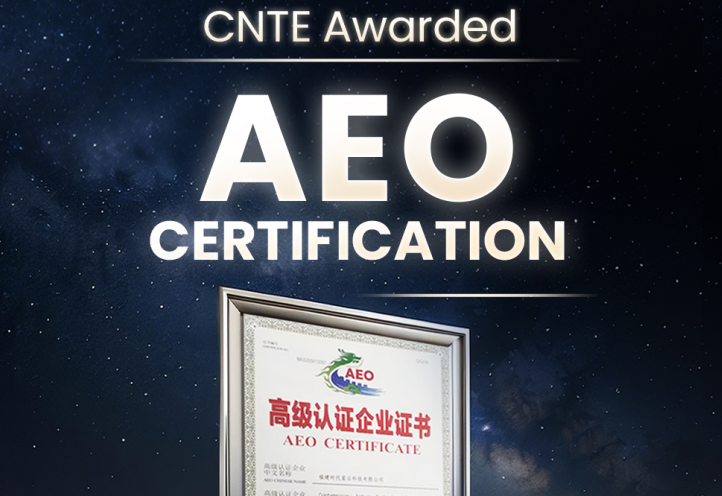How can communities leverage battery storage for local energy resilience?
Delve into the world of battery power storage, exploring advancements, challenges, and future prospects. Learn how CNTE leads innovation in renewable energy solutions, shaping a sustainable future.
Introduction to Battery Power Storage
1.1 Definition and Importance
Battery power storage refers to the process of storing electrical energy in batteries for later use. It plays a crucial role in modern energy systems by providing a means to store excess energy generated during periods of low demand and releasing it during peak demand times. This flexibility enhances grid stability, promotes renewable energy integration, and reduces reliance on fossil fuels.
1.2 Historical Evolution
Battery technology has undergone significant evolution since its inception. From the lead-acid batteries of the 19th century to the cutting-edge lithium-ion batteries of today, advancements have enabled increased energy density, longer lifespan, and faster charging capabilities. This evolution has been driven by the demand for more efficient and sustainable energy storage solutions.
1.3 Role in Renewable Energy Integration
Battery storage is pivotal in integrating renewable energy sources like solar and wind into the grid. These sources are intermittent by nature, meaning they generate electricity inconsistently. Battery storage bridges the gap between supply and demand by storing surplus renewable energy when it’s abundant and releasing it when needed, thus ensuring a reliable and stable power supply.
Types of Battery Technologies
2.1 Lithium-Ion Batteries
Lithium-ion batteries are the most prevalent in the market due to their high energy density, long cycle life, and fast charging capabilities. They are commonly used in portable electronics, electric vehicles (EVs), and grid-scale energy storage systems. However, concerns over resource availability and safety risks exist.
2.2 Lead-Acid Batteries
Lead-acid batteries have been around for over a century and are still widely used in applications like automotive starting batteries and off-grid energy storage. While they are relatively inexpensive and recyclable, they have lower energy density and shorter lifespan compared to lithium-ion batteries.
2.3 Flow Batteries
Flow batteries, such as vanadium redox and zinc-bromine, offer scalability and long cycle life, making them suitable for large-scale energy storage applications. They operate by storing energy in electrolyte solutions, allowing for independent scaling of power and energy capacity. However, their relatively low energy density and higher upfront costs limit their widespread adoption.
Advantages and Disadvantages
3.1 Lithium-Ion Batteries
Advantages: High energy density, long cycle life, fast charging.
Disadvantages: Resource constraints, potential safety hazards, degradation over time.
3.2 Lead-Acid Batteries
Advantages: Low cost, recyclability, robustness.
Disadvantages: Low energy density, short lifespan, maintenance requirements.
3.3 Flow Batteries
Advantages: Scalability, long cycle life, deep discharge capability.
Disadvantages: Lower energy density, higher upfront costs, complexity.
Applications
4.1 Lithium-Ion Batteries
Applications: EVs, portable electronics, grid-scale energy storage.
Example: Tesla Powerwall for residential energy storage.
4.2 Lead-Acid Batteries
Applications: Automotive starting batteries, off-grid power systems.
Example: Backup power for telecommunications towers.
4.3 Flow Batteries
Applications: Grid-scale energy storage, renewable energy integration.
Example: Vanadium redox flow batteries in utility-scale projects.
Benefits of Battery Power Storage
5.1 Energy Arbitrage
Battery storage enables energy arbitrage by storing electricity during off-peak hours when prices are low and discharging it during peak demand periods when prices are high, resulting in cost savings for consumers.

5.2 Peak Shaving
By smoothing out demand peaks, battery storage helps utilities avoid costly infrastructure upgrades and reduces the need to rely on fossil fuel-based peaker plants, thus enhancing grid stability and reliability.
5.3 Backup Power
Battery storage provides backup power during grid outages, ensuring the continuity of critical services and enhancing resilience in both residential and commercial settings.
Environmental Benefits
6.1 Reduced Greenhouse Gas Emissions
By facilitating the integration of renewable energy sources and reducing reliance on fossil fuels, battery storage contributes to lowering greenhouse gas emissions and mitigating climate change.
6.2 Increased Renewable Energy Utilization
Battery storage enables better utilization of renewable energy by storing excess generation for use during periods of low renewable output, thus maximizing the share of clean energy in the overall energy mix.
Challenges and Limitations
7.1 Cost, Lifespan, and Safety
One of the primary challenges associated with battery power storage is the cost. While prices have been declining steadily, especially for lithium-ion batteries, they still represent a significant upfront investment. Additionally, the lifespan of batteries remains a concern, with degradation over time leading to decreased performance and capacity. Safety is another critical consideration, particularly with lithium-ion batteries, which have been known to experience thermal runaway events under certain conditions, posing fire and explosion risks.
7.2 Limitations in Current Battery Technologies
Current battery technologies have several limitations that hinder their widespread adoption. For instance, energy density, which determines how much energy a battery can store relative to its size and weight, remains a bottleneck, particularly for applications requiring high energy storage capacity, such as electric vehicles and grid-scale storage. Moreover, the reliance on scarce or toxic materials in some battery chemistries, such as cobalt in lithium-ion batteries, raises sustainability concerns and limits scalability.
7.3 Regulatory and Policy Barriers
Regulatory and policy barriers also pose challenges to the deployment of battery storage solutions. Issues such as permitting, interconnection standards, and market structures can create hurdles for project development and financing. Furthermore, outdated regulations may fail to adequately incentivize or support the integration of battery storage into existing energy systems, slowing down the transition to a more flexible and sustainable grid.
Recent Innovations and Advances
8.1 Solid-State Batteries
Solid-state batteries represent a promising advancement in battery technology, offering higher energy density, improved safety, and longer lifespan compared to traditional lithium-ion batteries. By replacing the liquid electrolyte with a solid electrolyte, solid-state batteries eliminate the risk of leakage and thermal runaway while enabling faster charging and higher operating temperatures.
8.2 Advanced Electrolytes
Innovations in electrolyte chemistry are also driving improvements in battery performance and safety. Advanced electrolytes, such as polymer-based or ceramic electrolytes, offer enhanced stability, conductivity, and compatibility with various electrode materials. These electrolytes enable the development of next-generation batteries with higher energy density, faster-charging rates, and wider operating temperatures.
8.3 Novel Chemistries
Researchers are exploring novel battery chemistries beyond lithium-ion, including lithium-sulfur, sodium-ion, and magnesium-based batteries. These alternative chemistries offer the potential for lower cost, higher energy density, and improved sustainability by using abundant and environmentally friendly materials. While still in the early stages of development, these new chemistries could revolutionize the field of battery power storage in the coming years.
Future Outlook
9.1 Role in Renewable Energy Transition
The future of battery power storage looks promising as it plays a pivotal role in the transition to a renewable energy economy. By enabling the efficient integration of intermittent renewable energy sources like solar and wind, battery storage helps stabilize the grid, reduce reliance on fossil fuels, and accelerate decarbonization efforts. As renewable energy penetration increases, the demand for flexible and dispatchable storage solutions will continue to grow.
9.2 Emerging Trends
Several emerging trends are shaping the future landscape of battery power storage. Vehicle-to-grid integration, for example, allows electric vehicles to serve as mobile energy storage units, providing grid support services and leveraging their battery capacity to optimize energy use and reduce costs. Community-scale battery projects are also gaining traction, empowering local communities to take control of their energy supply and resilience through decentralized storage systems.

9.3 Impact of New Technologies and Policies
The growth of battery storage deployment will be influenced by a combination of technological advancements, supportive policies, and evolving market dynamics. Continued innovation in battery technology, coupled with favorable regulatory frameworks and incentives, will drive down costs and expand the adoption of battery storage across various sectors. As governments worldwide prioritize clean energy and grid modernization, battery power storage will play an increasingly vital role in shaping the future of energy systems.
Conclusion
In conclusion, battery power storage is a vital component of modern energy systems, offering numerous benefits ranging from grid stability and cost savings to environmental sustainability. As technology continues to advance and costs decline, battery storage is poised to play an increasingly significant role in shaping the future of energy.





